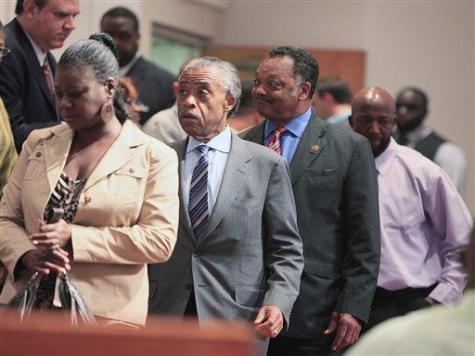An analysis of media reports on the Trayvon Martin shooting reveals how a local crime story became a national racial outrage.
The incident happened on Feb. 26, 2012, and was primarily reported in local outlets. The first major national news report was on CBS This Morning on March 8, and did not mention race.
The story did not take on a racial dimension until later that day, when the AP mistakenly identified the shooter as white (George Zimmerman is of mixed Hispanic descent).
The racial claims were then repeated and amplified by other media outlets, including Gawker, which claimed the neighborhood in which Martin was shot was “predominantly white” (it fact is is “almost 50 percent white,” according to the Daily Beast).
As online buzz heated up, activist groups became involved. The New Black Panther Party was among the first, gathering outside Sanford, FL police headquarters on March 11 to demand they arrest the shooter, known by then to be Zimmerman.
The next day, March 12, Al Sharpton’s National Action Network issued a statement in which Sharpton called for a “complete and thorough investigation” into Martin’s death. He added: “[W]e are told that racial language was used when the young man reported his suspicions to police,” a misleading claim later disproved by transcripts of the 911 call, in which race was first raised in a question by the dispatcher, not by Zimmerman himself.
On March 13, Sharpton devoted a portion of his program on MSNBC, PoliticsNation, to the Trayvon Martin case. He interviewed Martin family attorney Benjamin Crump, who reiterated the accusation that Zimmerman was “white”: “We think Trayvon Martin didn’t know who the heck this white man was who approached him before he got killed.”
Sharpton did not interview anyone representing Zimmerman–though Joe Oliver, a friend of Zimmerman’s, had been giving interviews elsewhere, pushing back against racism claims.
By March 14, the white-versus-black meme had become a fixture of media reporting on the story, including in local media outlets that had initially avoided casting events in that mould–and which had access to the facts.
The Orlando Sentinel, which had produced one of the first stories about the shooting on Feb. 28, with no mention of race, now described the “slaying of [an] unarmed black teen by a white crime-watch volunteer last month.”
The mainstream media picked up the racial theme and ran with it. Charles Blow of the New York Times cast Martin as a symbol of black boys–and the fears of black parents–everywhere.
Some conservative media outlets began exposing less innocent aspects of Martin’s life–but they were not the first to put character at issue; ABC News had highlighted Zimmerman’s 2005 arrest for battery (charges were dropped) in a March 10 report.
By March 23, President Barack Obama had entered the fray, reinforcing the idea that the Martin case was primarily about race. “If I had a son, he’d look like Trayvon,” Obama told reporters.
Nearly four weeks after the shooting, with investigations still pending, America now confronted a national debate about race–with all its attendant divisions.
It is worth noting that the mainstream media, even after the AP’s mistake about Zimmerman’s race, was rather reluctant to make the Martin case into an overtly racial issue. The key step appears to have been Al Sharpton’s intervention, when he used his activist network to make accusations of racism, then used his nightly platform on MSNBC to amplify those claims the next day, presenting a sensational, false, and one-sided account.
Sharpton may also have been important in bringing the White House into the debate. He has been an advisor to the Obama administration, and his hiring by MSNBC last year was criticized by liberal journalists and activists alike, who alleged he was being used as a “water carrier” for the president. In his tripartite media, activist, and political role, he has tried to turn the Martin case into a political cause for the left and for Obama.
There is, at the core of the Martin case, a legitimate story. A serious crime may have been committed, one that might reflect a real and persistent problem of racial profiling by police and by members of the public.
And then there is the illegitimate, false, white-versus-black story of how a Hispanic man was made “the scapegoat for what ails this country as far as racial relations go.”
That, in itself, is cause for outrage.

COMMENTS
Please let us know if you're having issues with commenting.